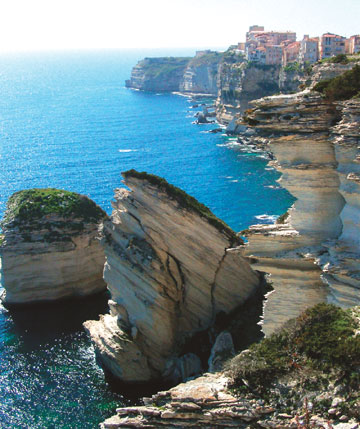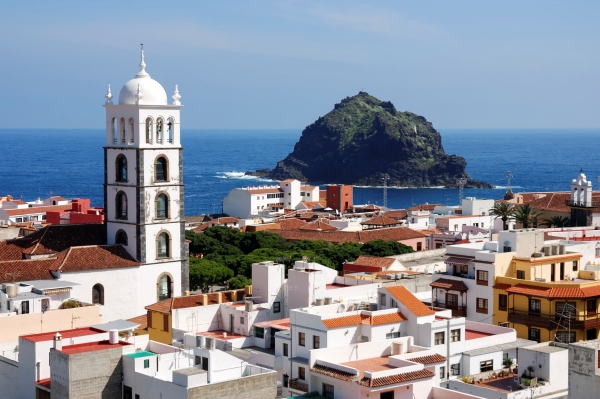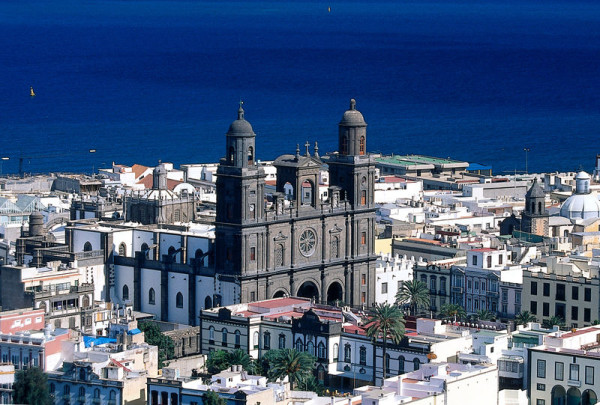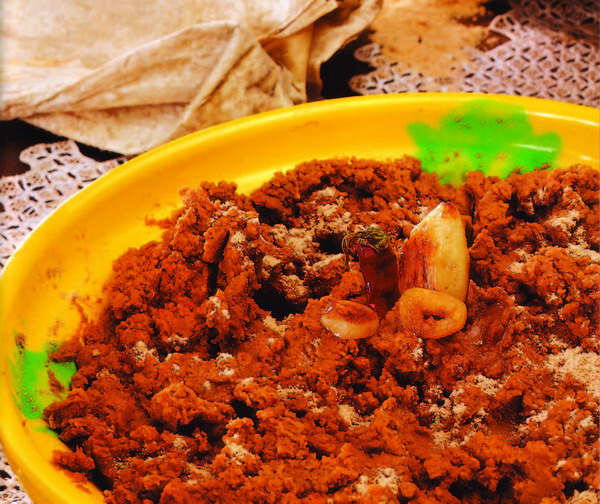Seven islands, six little isles, four national parks, hundreds of volcanoes, nearly all which are now inactive: this is a brief outline of an archipelago that lies off the West coast of Morocco, near the Tropic of Cancer. Annexed to Spain between the XIV and XV centuries when the earliest inhabitants, the Guanches, were still there, then transformed into a flourishing trading center on the shipping and trade routes to the American and African continents, these islands are nowadays two distinct Spanish provinces: the Western Islands (Tenerife, La Palma, El Hierro, and La Gomera) and the Eastern Islands (Gran Canaria, Lanzarote, Fuerteventura). The fantastic scenery, pleasant climate, and beautiful sea have all made this place a paradise for tourism, though tourists seem to prefer the easternmost islands; La Palma, El Hierro, and La Gomera are practically still free of important resorts. Tenerife is the most popular; its name derives from the Guanches dialect name for “Snow-clad Mountain”, clearly referring to the imposing Pico del Teide, which is the 3718-meter high inactive volcano that dominates this triangular island and is the highest in the whole of Spain. Besides seeing the capital of Tenerife, Santa Cruz, with its white beaches, its churches, and interesting museums, the great Parque Nacional del Teide is definitely worth a visit: the park stretches for kilometers in the barren, lavic scenery that skirts the two volcano cones of the mountain, interrupted only here and there by defiant but rare and beautiful and plants.

What’s the Allure of Gran Canaria?
Gran Canaria is part of the Canary Islands archipelago and is situated in the Atlantic Ocean, just off the northwestern coast of Africa. Despite a variety of different landscapes — including green forests, mountains, and desert terrain – and is known predominately for its holiday beach culture, it stands out as the only island in the Canaries with new areas still left to explore. This is excellent news for savvy travelers looking for a little more than just a getaway vacation to bask in the sun.
Points of Interest
Gran Canaria features a plethora of tempting visits designed for travelers wanting to learn more about the island’s history. A good place to start is the main museum Museo Canario which hosts the largest collection of Cro-Magnon skulls in the world or Casa Colón (Columbus House) , — a fine example of local architecture — that houses detailed accounts of the celebrated explorer’s adventures.
Visitors preferring the outdoors will be pleased to discover the national park known as Parque Nacional de Garajonay, featuring a wonderful display of flora and ancient forests. Meanwhile, the Camel Safari Park La Baranda provides guests with a unique experience; touring a beautiful palm-tree filled property on camelback.
Although fish prepared using a variety of methods is an island specialty, Gran Canaria has adapted well to the culinary expectations that come with being a top vacation destination; just about every world cuisine can be found here, at prices that will suit all budgets. Come sundown, the eclectic mix continues at the capital town of Las Palmas with laid back terrace bars, elegant lounge venues and a select number of nightclubs available to patrons seeking to make the most of their stay.
Activities
If relaxing on white sandy beaches doesn’t suffice, consider renting a car and setting aside a few days to more completely explore this magnificent jewel of an island. For the more athletically inclined, there exists a comprehensive selection of outdoor activities guaranteed to get your blood pumping and create memories that will last a lifetime. Whether you prefer to hike, go horseback riding or partake in any water sport under the sun, Gran Canaria will fulfill your every need.
Why We Love it
Gran Canaria boasts a rich archeological history and is considered to be a veritable melting pot of over 100 different ethnic groups coming together to create a unique experience of heritage and tradition. Every monument, cathedral and winding street is enriched by a collection of stories from the island’s colorful past. Best of all, the natives’ love of land and preservation of customs allows visitors a welcoming glimpse at its many treasures.
About the Canary Islands
Island of the Dogs
When you think about the “Canary Islands”, you probably imagine little yellow birds. Islas Canarias derives from the Latin term “Insula Canaria” and it means Island of the Dogs. It is believed that these “dogs” where a species of Monk Seals, which in Latin means “sea dogs”. Legends say that the original inhabitants of these islands used to worship dogs and even mummify them.

Two Capital Cities
Yes, it is true. Las Palmas de Gran Canaria and Cruz de Tenerife are situated on the two largest islands in the area and they share the status of the Capital of the Archipelago. Santa Cruz de Tenerife homes one of the most popular and famous Carnivals in the World. It attracts millions of tourists every February.

Natural Swimming Pools
If you will visit the beautiful town of Puerto de la Cruz, you will have the opportunity to find astonishing natural saltwater swimming pools. These pools were designed by Cesar Manrique, a famous architect/landscaper. Lido Martinez homes 7 pools, subtropical trees, changing facilities, a huge fountain, playground equipment, a Jacuzzi and an underground dance hall, restaurants and a casino.
Funny Food
Wherever you go on vacation, the first thing that you do is tasting the area’s specific food. The same thing you need to do in the Canary Islands. Food is a major and important part of Canarian culture. This food has a few amusingly named delicacies, like “Mojo”, sauce which may be red, green, or orange depending on its ingredients. Another delicacy is “ropa vieja”, which is translated “old clothes”. This is a dish of beef and chicken mixed with garbanzo beans and potatoes.

The Canary Islands is a great place for you if you want to enjoy a warm climate and great water. What do you know about the Canary Islands?
